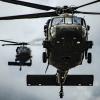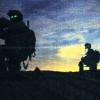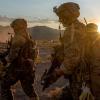In the private sector, companies sponsor data science competitions to solve stagnating problems, outsource difficult work and advertise to the labor market. Netflix announced the first major data challenge in 2006 in hopes of improving its recommendation algorithm by 10%. The reward—a cool $1 million.
In the first week, a team submitted an algorithm that bested Netflix’s proprietary model. Throughout the competition, Netflix required the competitors to publish their codes, and eventually, the winning algorithm—to the benefit of the data science community at large.
Most recently, the real estate...















